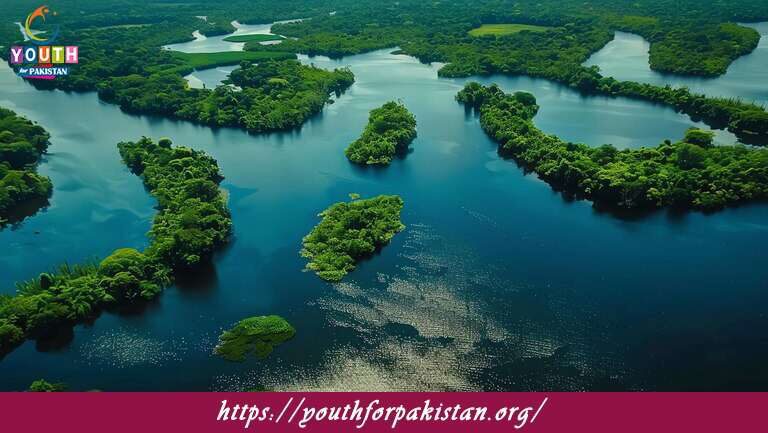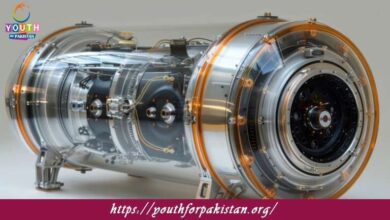12th Class Biology Chapter 26 Quiz with Answers

“12th Class Biology Chapter 26 Quiz: Some Major Ecosystems” describes the different kinds of ecosystems of the Earth, their special features, structure, and organisms that live in them. Ecosystems can be classified into two categories: terrestrial and aquatic, each having special features and life forms. Understanding these ecosystems is very important for students preparing for exams like MDCAT Quiz because it helps in understanding the different environments and their ecological importance.
Terrestrial Ecosystems
Terrestrial ecosystems are those that are land-based and are influenced by factors such as climate, temperature, and rainfall. Some of the major terrestrial ecosystems include forests, grasslands, deserts, and tundra.
Forest Ecosystems: Large, dense ecosystems with great amounts of rainfall that support many plant and animal life forms are referred to as forests. They can be further classified as tropical rainforests, temperate forests, and boreal forests, or taiga. Tropical rainforests have the largest biodiversity and are located near the equator. Temperate forests have all four seasons and support a variety of deciduous trees. Boreal forests, or taiga, are cold and dominated by coniferous trees like pines and firs.
Grassland Ecosystems: The grasslands are characterized by the seasonality of the rainfall. They provide habitat for herbivores like zebras and bison, and predators like lions and wolves. Grasslands contribute greatly to a balanced ecosystem due to grazing and predation. They include the savannas and the temperate grasslands. The savanna is generally warm and tropical. In contrast, the temperate grasslands lie in areas that have cold winters and hot summers.
Desert Ecosystems: Deserts are characterized by low rainfall and extreme temperatures. Despite harsh conditions, deserts support a variety of life, including cacti, succulents, and animals like camels, lizards, and desert foxes. Adaptations to conserve water and survive in the extreme heat are common among desert organisms. Examples of deserts include the Sahara Desert and the Mojave Desert.
Tundra Ecosystems: Tundras are cold, treeless regions found at high latitudes or altitudes. They experience long, harsh winters with permafrost in the soil. Despite the cold, tundras are home to species like mosses, lichens, and animals like arctic foxes, reindeer, and polar bears. The Arctic tundra and alpine tundra are key examples.
Aquatic Ecosystems
Aquatic ecosystems are found in water bodies like oceans, lakes, rivers, and wetlands. These ecosystems are influenced by factors like water temperature, salinity, and nutrient availability. Aquatic ecosystems are generally divided into marine and freshwater categories.
Marine Ecosystems: About 70% of the Earth’s surface is covered by marine ecosystems, characterized by saltwater. These include oceans, coral reefs, and estuaries. Coral reefs are among the most biodiverse ecosystems on the planet, with untold numbers of species finding a home in them. Oceans support a variety of organisms, from plankton to large mammals like whales. Estuaries are areas where freshwater meets the ocean, providing rich feeding grounds for many species.
Freshwater Ecosystems: These are found in rivers, lakes, ponds, and wetlands. The water here has low salinity. The diverse organisms supported by freshwater ecosystems include fish, amphibians, plants, and microorganisms. Freshwater ecosystems play an important role in the water cycle and provide habitats for many species and drinking water. Examples of freshwater ecosystems include the Amazon River, Great Lakes, and wetlands.
Human Impact on Ecosystems
Human activities, including deforestation, urbanization, and pollution, have significantly impacted the world’s ecosystems. For instance, the loss of forests in the tropics leads to habitat loss for many species, while pollution in freshwater ecosystems poisons aquatic life. Climate change also affects the ecosystems through altered temperatures and weather patterns that can break the delicate balance of the species.
Ecosystem health is important to maintain biodiversity and the ecosystem services that supply us with air and water purification, carbon sequestration, and food production. Sustainable practices and conservation efforts are needed to protect ecosystems and mitigate human impact.
MDCAT Quiz: Ecosystem
Prepare for your exams with the MDCAT Quiz focusing on the major ecosystems discussed in this chapter. The quiz will cover terrestrial and aquatic ecosystems, their features, and the role of organisms within them. It’s a great way to test your knowledge and improve your understanding of ecosystems.
- Test Name: 12th Class Biology Chapter 26 Quiz
- Type: Quiz Test
- Total Questions: 30
- Total Marks: 30
- Time: 30 minutes
Note: Answer of the questions will change randomly each time you start the test, once you are finished, click the View Results button.
Free Flashcards on Ecosystem Types
For quick revision, use our free flashcards on major ecosystems. The flashcards highlight key concepts about forest ecosystems, desert ecosystems, grasslands, and aquatic ecosystems, including marine and freshwater types. Flashcards are an excellent tool for memorizing important details and terms for the exam.

Which ecosystem is characterized by cold temperatures, short growing seasons, and a layer of permafrost?
Tundra

Which ecosystem is characterized by warm temperatures, seasonal rainfall, and a mix of grasses and scattered trees?
Savanna

Which ecosystem is characterized by cold temperatures, moderate precipitation, and coniferous forests?
Taiga

Which ecosystem is characterized by high temperatures, little rainfall, and sparse, drought-resistant vegetation?
Desert

Which ecosystem is characterized by low temperatures, little rainfall, and low-growing plants?
Tundra

Which ecosystem is characterized by cold temperatures, moderate rainfall, and coniferous trees?
Taiga

Which ecosystem is characterized by hot temperatures, little rainfall, and cacti and other succulent plants?
Desert

Which ecosystem is characterized by high temperatures, abundant rainfall, and diverse animal and plant life?
Tropical rainforest

Which ecosystem is characterized by cold temperatures, little precipitation, and small, low-growing plants?
Tundra

Which ecosystem is characterized by moderate temperatures, moderate rainfall, and a mix of deciduous and coniferous trees?
Temperate forest

Which ecosystem is characterized by hot temperatures, little rainfall, and sparse, drought-resistant vegetation?
Desert

Which ecosystem is characterized by cold temperatures, low precipitation, and lichen and mosses?
Tundra

Which ecosystem is characterized by high temperatures, year-round rainfall, and a variety of animal life?
Tropical rainforest

Which ecosystem is characterized by high temperatures, abundant rainfall, and dense vegetation?
Tropical rainforest

Which ecosystem is characterized by low temperatures, little precipitation, and low-growing plants?
Tundra

Which ecosystem is characterized by low temperatures, short growing seasons, and evergreen trees?
Taiga

Which ecosystem is characterized by warm temperatures, seasonal rainfall, and grasslands with scattered trees?
Savanna

Which ecosystem is characterized by high temperatures, year-round rainfall, and lush vegetation?
Tropical rainforest

Which ecosystem is characterized by low temperatures, little precipitation, and sparse vegetation?
Tundra

Which ecosystem is characterized by moderate temperatures, high humidity, and a variety of trees?
Temperate forest

Which ecosystem is characterized by cold temperatures, short growing seasons, and small shrubs and grasses?
Tundra

Which ecosystem is characterized by cold temperatures, short growing seasons, and coniferous forests?
Boreal forest

Which ecosystem is characterized by high precipitation, dense vegetation, and diverse animal life?
Tropical rainforest

Which ecosystem is characterized by warm temperatures, wet and dry seasons, and tall grasses and scattered trees?
Savanna
Experience the real exam environment with our expertly designed collection of over 25,000 MCQs MDCAT Mock Tests.





